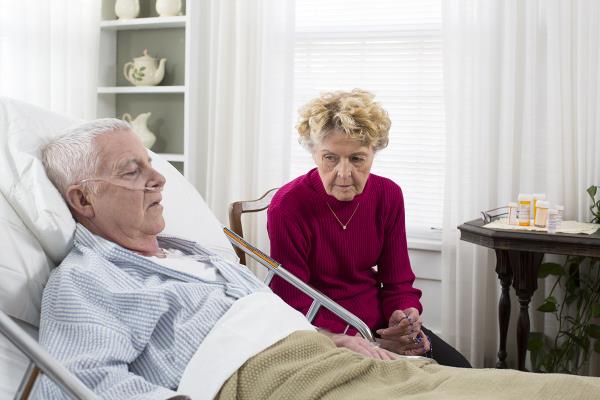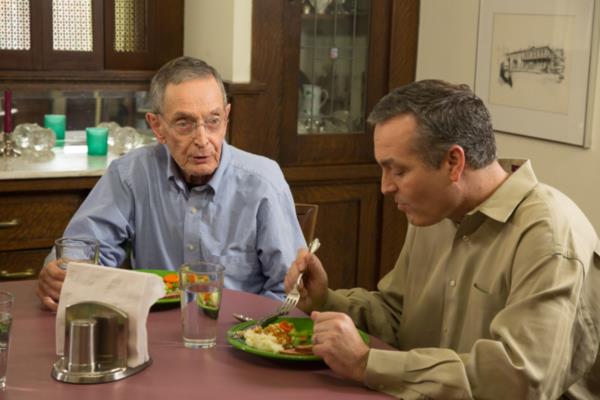As a mother, father, grandparent or someone close to you nears the end of life, your loving care matters more than ever. However, sometimes it’s hard to know how to best navigate those challenging circumstances.
“Looking back, I regret how much I tip-toed around the fact that my mom was dying,” says one family caregiver. “When we moved her into a room at the hospice house she said, ‘Well I guess I’ll miss Christmas this year.’
“It was early December and we had brought a small tree to decorate her room. My immediate reaction to her gloomy comment was ‘Aw, no Mom! We’ll bring Christmas to you!’ But the look on her face told me she knew just as well as I did that she wouldn’t make it to Christmas.”
Situations like this can be traumatic for the entire family. Here are seven tips that may help you and your dying loved one confront the reality of your circumstances and approach the end of life with more restful reassurance.
7 Tips When Someone You Love is Dying
- Acknowledge the elephant in the room
The big “Ds,” death and dying, can seem awkward to talk about. Tiptoeing around death can actually add stress. If you don’t know where to start, just follow your loved one’s lead. - It’s okay to express your emotions, even your sadness, in front of your loved one
You may feel the urge to pretend that everything is all right, but expressing your feelings gives your loved one freedom to be honest about his or her feelings in front of you. Your loved one will likely feel relieved that you understand what’s occurring. - Your presence matters
Even if hospitals make you uncomfortable or you’d rather remember your loved one fully functional, showing up probably matters more than your loved one can say. - Create meaningful conversation
People at the end of life usually prefer to recall happy memories with those they love and find closure. Try to focus conversation around themes like forgiveness, gratitude and love between friends or family members and themselves. - Listen carefully for any messages trying to be conveyed
Sometimes, people approaching death may try to communicate an important message to those around them, even if they’re unable to speak clearly. If this happens, don’t immediately assume it’s nonsensical babble; do your best to understand what your loved one is trying to say. - Find out answers to typical end-of-life questions
If your loved one can still think rationally and communicate clearly with you, use this time to learn about your loved one’s end-of-life preferences. Knowing the answers to questions like “where do you hope to spend your last days?” and “what type of pain management do you want?” can help you ensure your loved one remains comfortable until the very end. - Be mindful of legal documents
Know what end-of-life legal decisions have already been made, such as a living will or a designated healthcare power of attorney. A living will describes wishes for medical treatment, including the use of life-prolonging treatment. A healthcare power of attorney is appointed to act on behalf of a person regarding medical treatment decisions. Knowing and respecting these decisions can help you carry out your loved one’s wishes with confidence.
Planning for End-of-Life
By using the many resources available for end-of-life planning, you can help ensure that aging loved ones live out their final chapter in a meaningful way.
For more insight on what it means to live well to the end, watch this discussion between Home Instead Gerontologist and Caregiver Advocate Lakelyn Eichenberger, Ph.D., and Shoshana Ungerleider, MD, physician and founder of End Well. End Well is a movement driving a cultural shift to improve the end-of-life experience.
Dr. Ungerleider emphasizes the importance of communities and healthcare systems working together to improve end-of-life experiences and normalize end-of-life planning to ensure individuals can live out their lives according to their values and with goals realized.
Home Care Enhances End-of-Life
For many, end-of-life wishes include being at home. Approximately 90 percent of those 65+ say they hope to age in place at home, however, the reality is that 70 percent of older adults age 65+ will need assistance at some point. It’s important to discuss options for care at home including home care and home health care.
Palliative Care is specialized medical care for someone living with a serious illness, such as cancer, heart failure, COPD, dementia, and other chronic conditions. Care is focused on providing relief from the symptoms and stress of an illness. Care can be used at any stage of a patient’s illness and is designed to improve the quality of life for both the patient and the family.
It is important to note that palliative care and hospice care are not the same – although both types of care can be part of an aging adult’s care plan.
Hospice care is used when attempts to cure a patient’s terminal illness or condition are stopped and doctors believe the patient has less than six months to live. Like palliative care, hospice care provides symptom relief as much as possible. In many caregiving situations, hospice care is not utilized soon enough.
In-home respite care also has the opportunity to provide a much-needed break for family caregivers. When used over time, respite has been found to help caregivers continue to care for their loved one at home, preventing or delaying the need for facility care.
Home care, like the services provided by Home Instead, can be used in any increment of time from as little as a few hours, up to 24 hours a day and can be provided daily, weekly, monthly, or a few times per year.
With a little planning, you’ll likely be able to make the most of the time you have left with a loved one, help that person feel as comfortable as possible, and bring the closure needed to move on peacefully.
Personalized Senior Care





